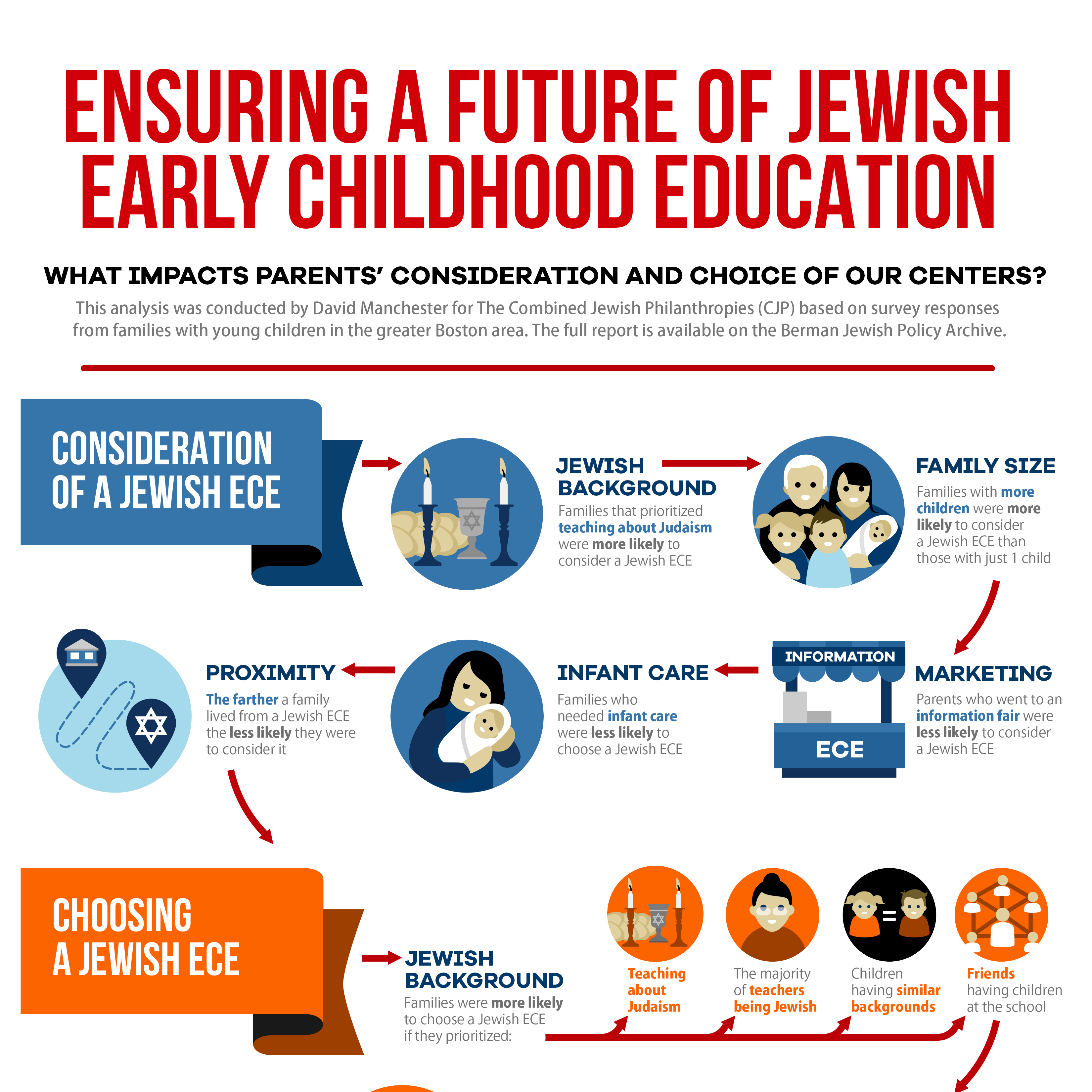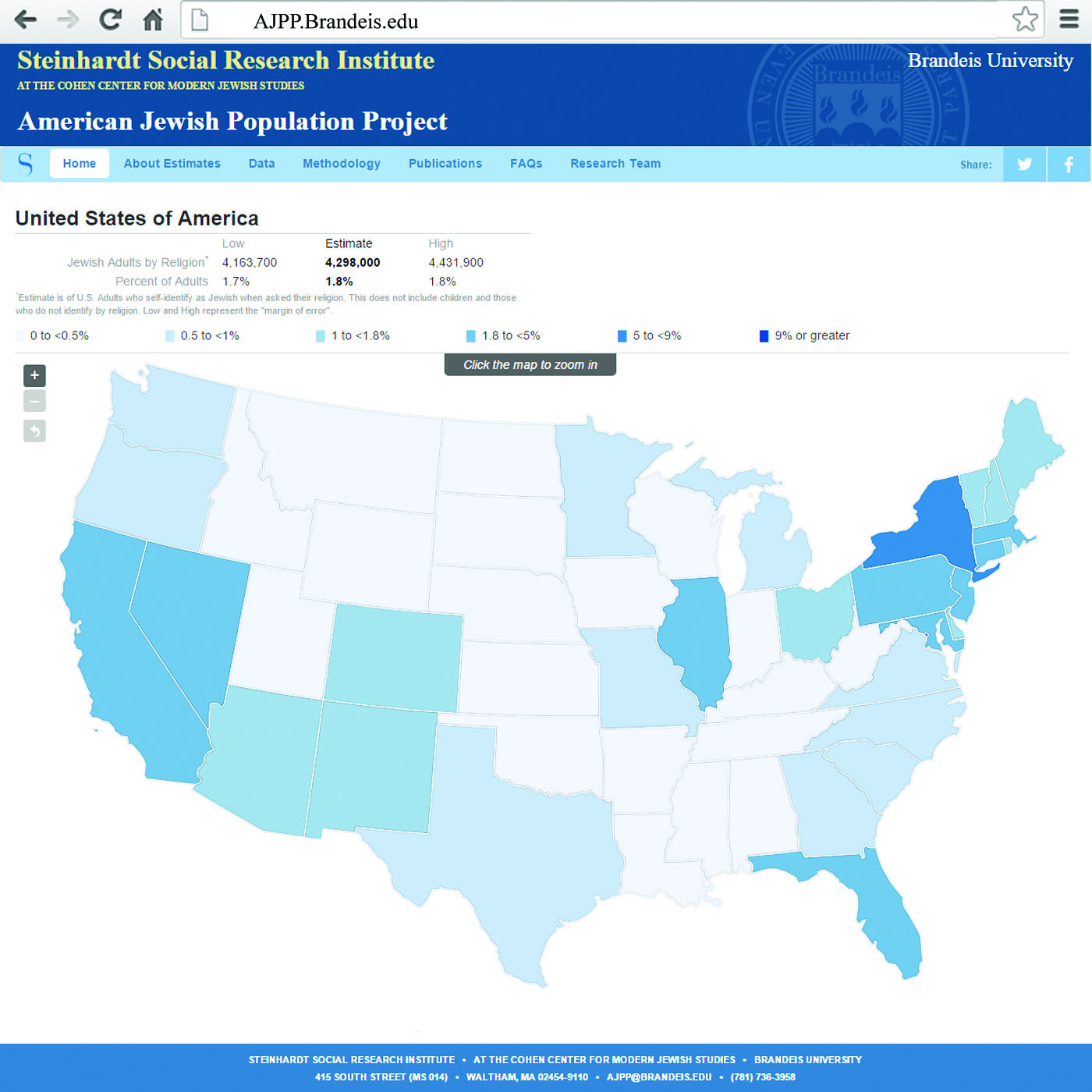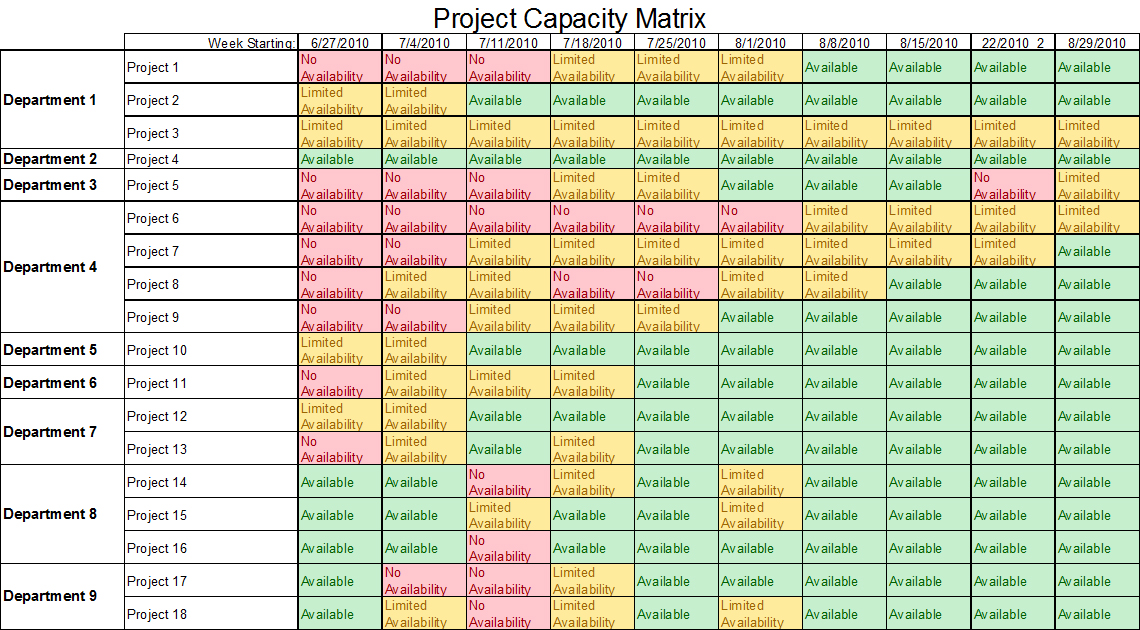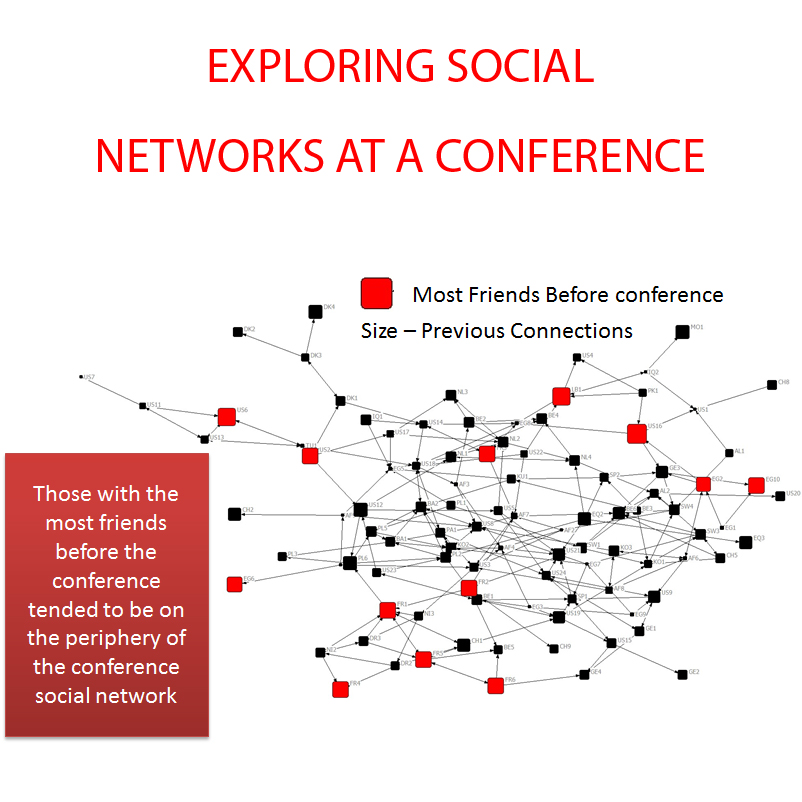Parental Choice of Early Childhood Centers

Over 50 Jewish ECEs around the nation have closed since 2010. This analysis was prepared for the Combined Jewish Philanthropies to analyze and explore the findings of a survey they conducted of Jewish families with young children in the Boston area.
The analysis sought to understand the factors that impacted a family's choice of a secular or Jewish ECE to identify initiatives that could help address families’ desires and increase enrollments in Jewish ECEs.
Utilizing a variety of analytical approaches including geo-spatial analysis, this report identified the impact that a family's location, as well as the schedule of Jewish ECEs, has on their final decision. In total, six proposals were identified of which five are considered good investments.
Read Article about the Findings Open the Infographic Read The Full Report Watch The Presentation About FindingsThe Future of the Jews
I was chosen to participate on a panel with other Brandeis scholars including Professors Jonathan Sarna, Jon Levisohn, and Sylvia Barack Fishman to reflect on the findings of the 2013 Pew study of the American Jewish community and the Call to Action which was signed by many communal leaders.
Read My Response Watch My PresentationAmerican Jewish Population Project

The American Jewish Population Project is a complex meta analysis merging the results of hundreds of surveys of Americans to generate population estimates of the Jewish community. While on the project, I managed the original development of an interactive web based map that provides users easy access to find desired results. The site has received considerable media and community attention and has enabled local organizations to compare their engagement initiatives against the size of the population they seek to engage to better understand their success.
Explore the WebsiteCapacity Matrix

The capacity matrix was designed to help an organization manage its staff resources in scheduling programs and other activities. By accessing scheduling information and staff experiences in a centrally located database, this matrix was designed to be automatically updated whenever needed.
Staff reported that this tool reduced delays in scheduling and adding new events to the calendar giving them real time abilities to look ahead. It also provided senior staff with a top level view of organizational commitments to better communicate with partners.
Exploring Social Networks At A Conference

An individual's social network has been shown as a strong predictor of Jewish engagement. Individuals socialize with people near them and exchange information and behaviors with them. Individuals with a larger Jewish social network are more likely not only to hear about Jewish events but also to have friends at those events making them more desirable to attend.
The development of personal relationships and the expansion of an individual’s social networks was one of the motivations behind an international conference in 2015. The following are the results of an analysis seeking to explore relationships that existed prior to the conference, as well as to predict those participants that had the greatest interaction during the conference. The analysis consists of social network analysis and statistical modelling.
Read The Findings